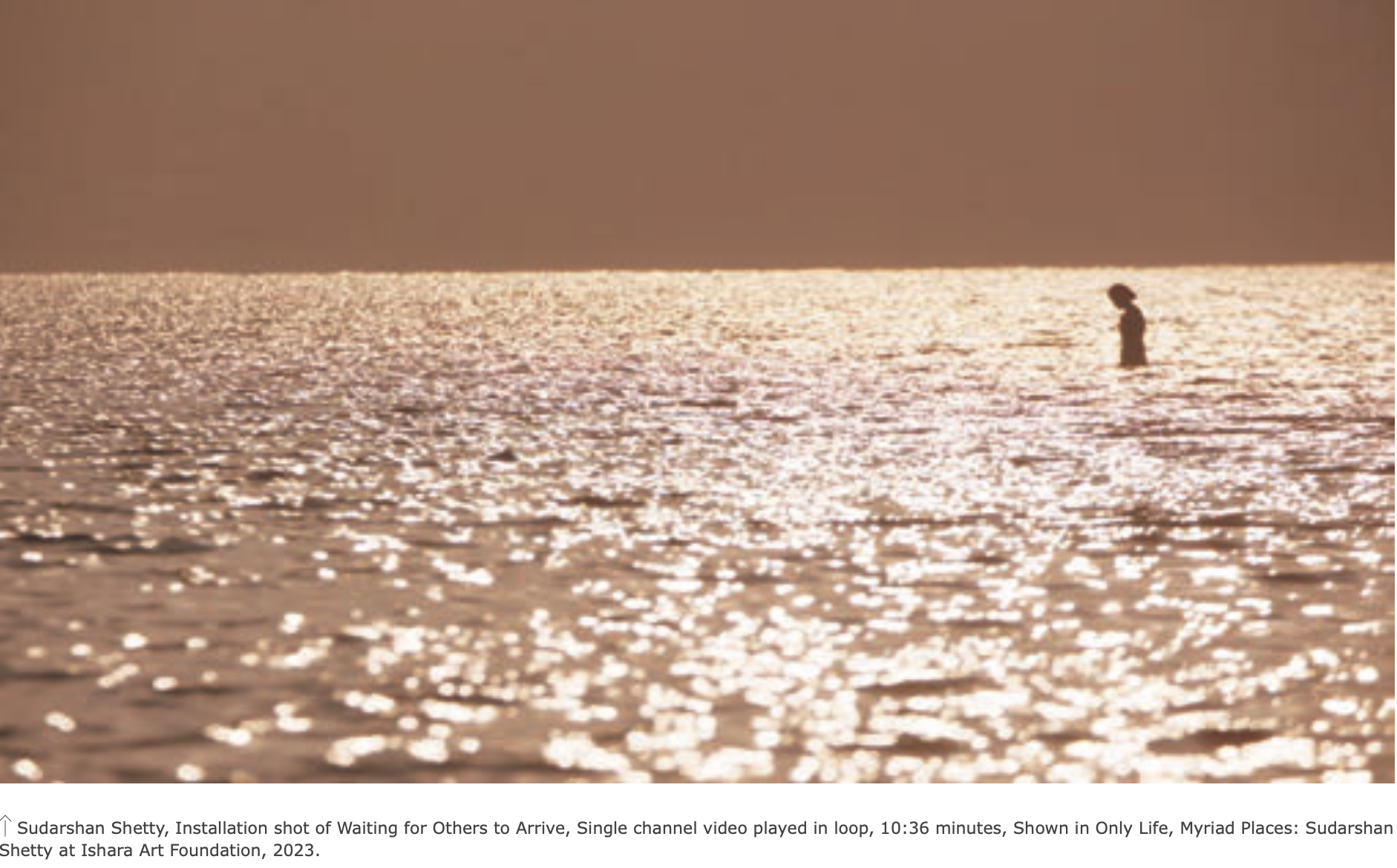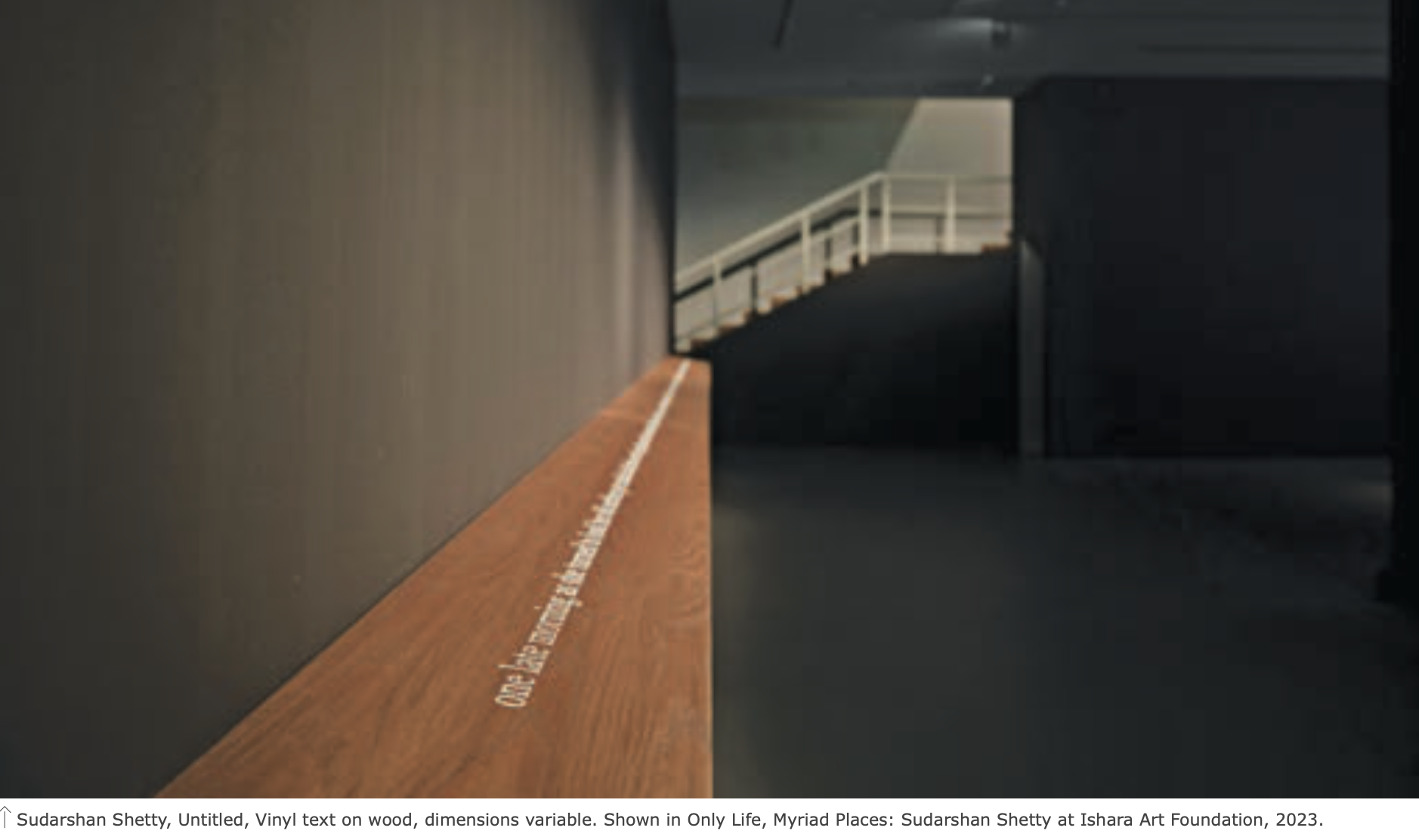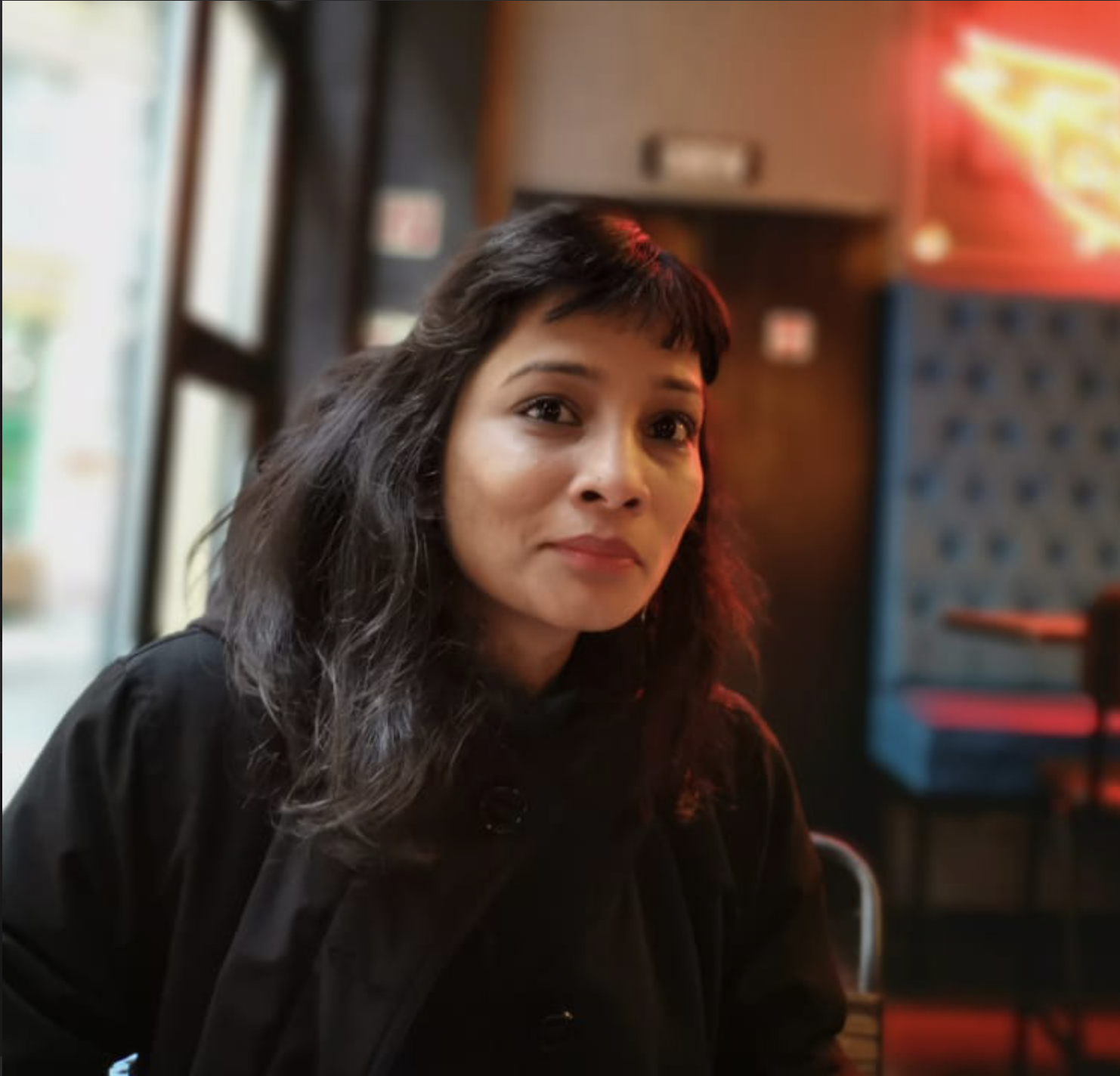
The exhibition Only Life, Myriad Places attempts to create a transformational space, emulating the labyrinthian mind. Toying with existence in its many forms, succumbing to death and subsequent new or renewed beginnings after the course of its journey, leaving behind stories retold through the stillness of assorted totems, the idea of the perpetual process of rebirth and its continuum can perhaps be measured by the pace, evolution, and number of works and mediums presented.
The show opens with an Untitled ensemble featuring six pairs of vessels, 6 brass and 6 wooden, carved to mimic their metal twins, mirroring each other in a vertical arrangement within a vitrine. These vessels silently and semiotically narrate stories of a relationship formed between the object and the possessor, of a shared struggle connecting the past with the present. Sabih says, “Objects are like carrying homes,” and focuses our attention on Partition and migration stories, highlighting the power of objects as libraries of memory, emotion, and historical significance. These also represent a source of comfort and nourishment, which with its womb-like associations, can also speak of its politics.
Through a dimly lit passage, prompting a deliberate pace to catch the murmurs of bustling streets, the work Waiting for Others to Arrive is a single-channel video shot in Bombay. It confronts the viewer with the rundown setting of a Neoclassical building; the sound of sarangi, a traditional Asian instrument (played by Shetty’s friend who lost her own voice but persisted in expressing herself through music), weaves in and out of the noise from the streets. The sequence is reiterated in various settings, where the objects in the video persist in an atmospheric limbo, caught between recovery and ruin.

Following the maze, the sounds guide you to the next room, unveiling an expansive screen: we are now introduced to Shetty’s most recent video work, premiering at Ishara, One Life Many, a 30-minute film shot in Goa, evoking the Anima, embodying both the singular and the multitude within one being. Collectively converging to create an image of one and the image of many collapsing all identities. Water takes on a baptismal ritual symbolism as a man enters the sea, announcing the beginning of a transformative journey, and then emerges as a woman in a glistening dew of light, and navigates the bustling chaos of marketplaces, following a circuitous journey that flows from a single into many diverse paths, articulating Shetty’s own visual symphony.
The places and various faces that develop in and out of the congested streets on the screen feel remarkably familiar, a merging of the many sub-continental visages revealing an unrealized commonality, especially viewing the film here in the Gulf where boundaries are profoundly blurred, a reminder that similarities are so pervasive and familiar, advocating that we are all family. Image by image, one transitions from being a stranger to an active participant, walking an empty city full of dichotomies, a reminder of the isolation and emptiness of streets during the COVID era, when once distant existential questions suddenly loomed extremely large. Shetty seamlessly sets the stage for revelations from our outermost to our innermost selves, establishing an epistemological relationship and imploring us to care.
As we transition into the next space, where the echoes of the initial video permeate the surroundings, the sound spillages are initially subtle but occasionally become pronounced, resonating with the untold experiences of countless lives. With meticulous coordinates and proximity, Untitled has a reassembled broken pot placed within a vitrine case, its shadow below casting its own damaged yet present agency, and it is this lone fractured pottery piece that, amid the reiterative portrayal of collective themes, imprints the essential and existential premise of the show. Behind this, a triptych features the Gateway of India, a colonial locus, witnessing the act of a figure engaged in a funerary rite, dropping a pot with cremated ashes from its right shoulder, and freeing the remains. As Rumi says, “Although you appear in earthly form, your essence is pure Consciousness.” In the Zen Buddhist tradition, in their pursuit for freedom from attachments, monks would shun all but the most basic possessions, understanding that nothing endures. Even mortal remains must perish and become ephemeral; in this context, objects that narrate stories must also become simulacra, props trying to capture us in a Faustian trap.
Many of the show’s works see Shetty exploring folkloric themes connected to his central premise. Untitled is written without punctuation, unfolding as a loop. Sisyphean in its philosophy, it forces the viewers to submit to its innumerable probabilities, with no discernible boundaries, only to get caught in a loop of reimagining the fate of the story.
Finally, the exhibition leads the viewer to a space above the maze below, a separate space with no other sound or visual to contest its presence, to the solitude of the concluding video piece, Age of Love. Within this video installation, six vocalists collaborate to interpret a musical composition influenced by elements of Hindustani classical music. The setting challenges them to convey the theme of love without explicitly using the word itself. Ordinary objects like chairs take on the role of the characters, mourning the absence of the beloved. The shattering of the chandelier, awakening from its trance, serves as a profound portrayal of the sociopolitical and cultural landscapes within the production milieu of Shetty’s films and sculptures. These films are characterised by intricate allusions, offering a nuanced depiction that transcends the mere representation of the societal backdrop from which they arise.

Only Life, Myriad Places, Ishara Art Foundation, Dubai, 25 August – 9 December 2023.














